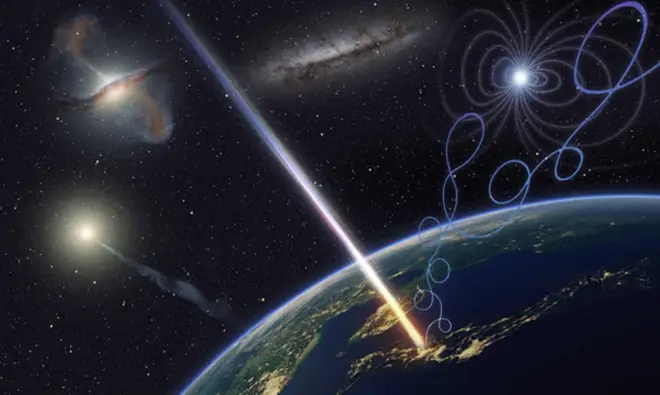
James O'Brien 10am - 1pm
24 November 2023, 16:19

A cosmic ray observed by scientists in Utah has been described as 'unprecedented' in modern times.
Scientists in Utah observed an "unprecedented" cosmic ray through a telescope system in Utah in May 2021.
It was named Amaterasu, after the sun goddess from Japanese mythology.
The study into the cosmic ray was released this week and it was one of the most powerful cosmic rays ever observed.
The scientists who observed Amaterasu say the cosmic ray could only have come from only the most powerful of celestial events, much bigger solar flares.
Professor Matthews said that in the case of Amaterasu, "you trace its trajectory to its source and there's nothing high energy enough to have produced it.
"That's the mystery of this – what the heck is going on?"
Scientists believe Amaterasu may have originated from an invisible corridor or "void... in the universe."
Cosmic rays are clusters of high-energy particles that move through space at almost the speed of light and are usually created by solar flares.
When cosmic rays hit the Earth’s atmosphere, they produce showers of secondary particles, some of which reach our planet’s surface.

Professor Toshihiro Fujii of Osaka Metropolitan University in Japan, was one of the scientists who observed the phenomenon captured by the Telescope Array experiment in Utah.
He said: "When I first discovered this ultra-high-energy cosmic ray, I thought there must have been a mistake, as it showed an energy level unprecedented in the last three decades.
"No promising astronomical object matching the direction from which the cosmic ray arrived has been identified, suggesting possibilities of unknown astronomical phenomena and novel physical origins beyond the Standard Model."
Amaterasu has an energy of 240 quintillion electronvolts. For comparison, the Large Hadron Collider, the world’s biggest and most powerful particle accelerator, runs at 13.6 trillion electronvolts
John Matthews, a research professor at the University of Utah's Department of Physics and Astronomy in the US, said: "Things that people think of as energetic, like supernova, are nowhere near energetic enough for this.
"You need huge amounts of energy, really high magnetic fields to confine the particle while it gets accelerated."
The cosmic ray appeared to come from the Local Void, which is an empty area of space which borders the Milky Way galaxy.
Read more: Shimmering galaxies revealed in new photos taken by European space telescope
Read more: SpaceX launches new rocket but explosions end second test flight
Professor at the University of Utah's Department of Physics and Astronomy John Belz said: "These events seem like they're coming from completely different places in the sky.
"It's not like there's one mysterious source.
"It could be defects in the structure of spacetime, colliding cosmic strings.
"I mean, I'm just spit-balling crazy ideas that people are coming up with because there's not a conventional explanation."